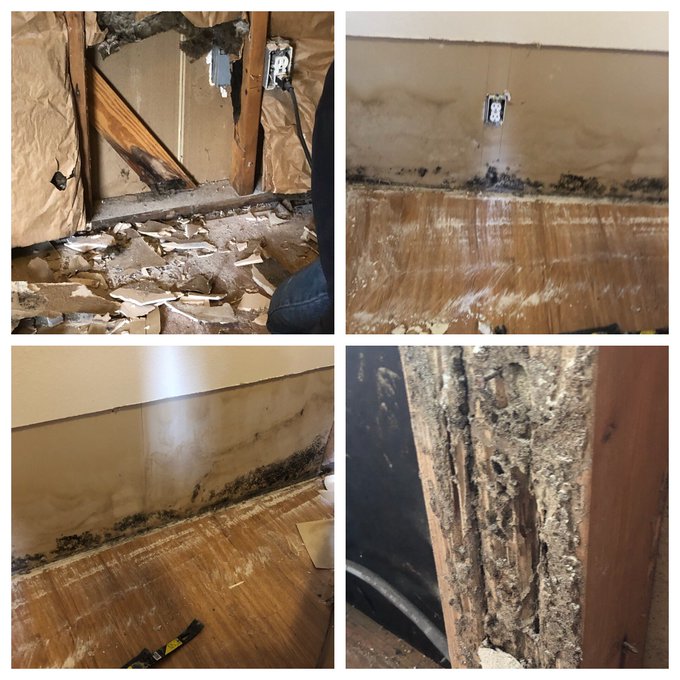Spring is here and so are the bugs. As covered in Orkin’s Top 50 Termite Cities List, termite species generally swarm based on favorable weather conditions.
Warm cities such as Miami lead the list among three other East and Gulf Coast cities in the top five
Miami is the front runner of Orkin's Top 50 Termites Cities list. Los Angeles follows in second place, with Tampa, New York and New Orleans rounding out the top five.
Most of the locations listed are in a warmer climate; however, the number four spot is taken by New York City.
"What termites need most in life is moisture and New York has no shortage of water. Warmth is less of a need, but it sure doesn’t hurt as their colony sizes and foraging range increase with temperature. That said, New York still gets warm enough during the spring and summer months," said Glen Ramsey, an entomologist with Orkin. "Lastly, New York’s building construction is aging, which allows for settlement cracks to develop and allow termite entry."
According to Orkin, United States' residents spend an estimated $5 billion annually to control termites and repair termite damage.

Termite infestation: Wooden panel eaten up by termites. Termites lying dead on the floor. (ChristianNasca/Getty Images)
When it comes to types of termites, all areas of the U.S. are prone to subterranean termites with concentrations from slight to very heavy. The west coast and coastal regions of the Southeast have an additional threat of drywood termites.
The list is based on treatment data from the metro areas where Orkin performed the most first-time customer termite treatments from Feb. 1, 2018 – Jan. 31, 2019. The ranking includes both residential and commercial treatments.

Species generally swarm based on favorable weather conditions. Most species of subterranean termites swarm in the spring and summer, a time frame when homeowners are more likely to notice signs of an infestation. Drywood termites typically swarm during the late summer or fall months. Varying conditions may mean that swarms will occur at different times, according to Orkin.
Ramsey said an increase in termite activity following a hurricane can definitely be the case as moisture is extremely important.
"The other thing that can assist in increased termite pressure is the availability of food. Hurricanes leave a path of destruction that deposits trees, branches and structural lumber all over the ground. These trees and damaged lumber create termite hot spots near homes and businesses," Ramsey said.
When they’re ready, termites emerge searching for the ideal environment of warmth, moisture and food. And because of urbanization, there are fewer dead trees lying around, so termites will find their way to other sources of wood such as residential properties, the press release states.
“Often called the ‘silent destroyer,’ termites can secretly hide and thrive in your home, property or yard without any immediate signs of damage for years,” said Ramsey. “U.S. residents spend an estimated $5 billion annually to control termites and repair termite damage – which occurs in approximately 600,000 homes each year.”
Termites invade properties by foraging from their colonies in search of food resources and finding home foundations. Cracks or gaps around pipes and wires give the pests access inside.
“Termites are the ultimate workaholics – they chew constantly, causing extensive damage over time. Some enter structures through wood-to-ground contact by building shelter tubes or entering directly through cracks in the foundation as small as 1/32 of an inch – about the thickness of a business card," Ramsey said.
The busy home-buying season, which usually occurs during April through September is approaching, and home buyers should be aware of the risks that termites or other pests present.
"Be on the lookout for rippled paint, damaged wood, wood in contact with the ground and moisture problems. Termites build mud tubes from the soil up to structural wood, so look for these on the foundation. Lastly, before you sign on the dotted line, get a termite inspection of the property," Ramsey said.
These pests are a threat to your household and beyond, so it’s critical to detect and treat for them as early as possible. Anyone who suspects a termite introduction should contact a pest management professional immediately.
RELATED:
Expert explains why mosquitoes are attracted to some people more than others
How to soothe itchy mosquito bites, why you shouldn't scratch
10 myths about ticks debunked
Expert explains why mosquitoes are attracted to some people more than others
How to soothe itchy mosquito bites, why you shouldn't scratch
10 myths about ticks debunked
Property owners can get termites from wooden structures, such as porches and decks, that are in direct contact with the ground. Termites can also attack if you have stacks of firewood that lean against the house, and/or have damp soil near foundations from leaking gutters or trees and shrubs in close proximity to the house.
You may have termites if you notice a temporary swarm of winged insects in your home or from the soil around your home, any cracked or bubbling paint, wood that sounds hollow when tapped or mud tubes on exterior walls and wooden beams.

Background of termite texture on wooden panel with copyspace. (sakhorn38/Getty Images/iStockphoto)
Orkin recommends homeowners should check their water drainage sites to ensure they work properly, fix pipes and gutters, caulk around utility lines, get rid of rotting wood and place screens over outside vents.



No comments:
Post a Comment